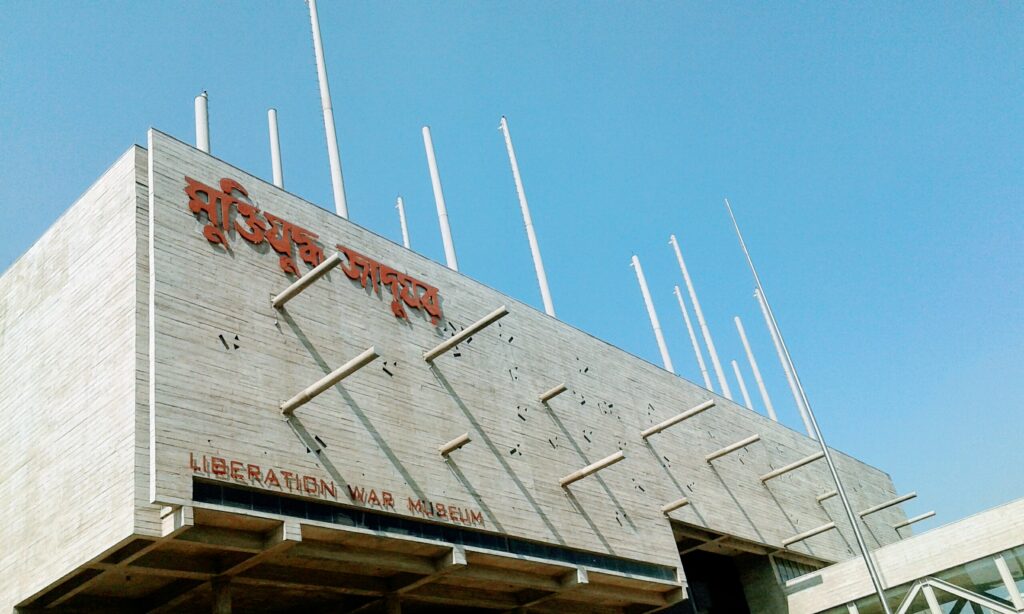The Liberation War Memorial: Paying Tribute to Bangladesh’s Heroism and Resilience
The Liberation War Memorial in Bangladesh is a memorial dedicated to those who lost their lives in the 1971 Liberation War. Every year, thousands of visitors flock to the memorial to pay their respects and honor the heroes of the war. The monument stands tall in the heart of Dhaka, the capital of Bangladesh, as a reminder of the country’s struggle for independence.
The Liberation War of 1971 was a bloody struggle between the people of East Pakistan (now Bangladesh) and the West Pakistanis. After a long nine months of fighting and bloodshed, the people of East Pakistan were finally able to declare independence and form the nation of Bangladesh. The memorial was built to commemorate the heroism and resilience of the people of Bangladesh during the war.
History of the Liberation War Memorial
The Liberation War Memorial was built in 1992, twenty-one years after the war ended. The memorial was built with the help of voluntary donations from the people of Bangladesh. It is situated in the heart of Dhaka, the capital of Bangladesh, and is a popular destination for both locals and tourists alike.
The memorial is divided into four sections, each of which pays homage to different aspects of the war. The first section is dedicated to the martyrs of the war who sacrificed their lives for the independence of Bangladesh. The second section is dedicated to the brave freedom fighters who fought bravely for the freedom of their country. The third section is dedicated to the innocent people who suffered during the war. And the fourth section is dedicated to those who contributed to the war effort in various ways.
The Memorial Site
The Liberation War Memorial is situated in the middle of a large park, surrounded by lush trees and greenery. The site of the memorial is a solemn and peaceful place, where visitors can reflect on the courage and resilience of the people of Bangladesh.
The monument itself is quite impressive, standing tall at a height of 15 meters. The monument is made of granite and is adorned with the national flag of Bangladesh. The monument is often visited by foreign dignitaries and politicians, paying their respects to the heroes of the war.
The main attraction of the memorial is the Eternal Flame, which is placed in the middle of the monument. The flame is lit every year on the 16th of December, which is the anniversary of the independence of Bangladesh.
Commemoration and Celebration
The Liberation War Memorial is a popular destination for locals and tourists alike. Every year, on the 16th of December, the anniversary of the independence of Bangladesh, thousands of people flock to the memorial to pay their respects and celebrate the country’s freedom. Other events such as concerts, parades, and other cultural activities are held at the site to commemorate the heroes of the war.
The memorial also serves as a reminder of the courage and resilience of the people of Bangladesh. It is a symbol of the struggle and sacrifice that was endured for the independence of the country. The memorial serves as a reminder of the country’s long and hard-fought battle for freedom and as a source of pride for the people of Bangladesh.
Conclusion
The Liberation War Memorial in Bangladesh is a symbol of the country’s hard-fought struggle for freedom. Every year, thousands of people visit the memorial to pay their respects and to celebrate the heroes of the war. The monument stands tall in the heart of Dhaka, reminding people of the courage and resilience of the people of Bangladesh. It is a popular destination for both locals and tourists alike, and serves as a reminder of the country’s long and arduous journey towards independence. The Liberation War Memorial stands not only as a tribute to the sacrifices made during the war but also as a testament to the enduring spirit of the Bangladeshi people. Visitors to this solemn site can reflect on the profound history of the nation and gain a deeper understanding of the struggles that paved the way for Bangladesh’s sovereignty.

